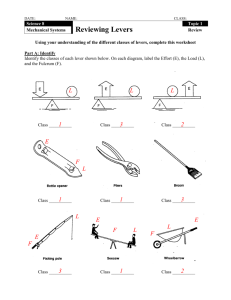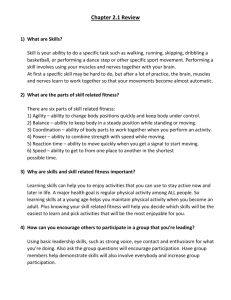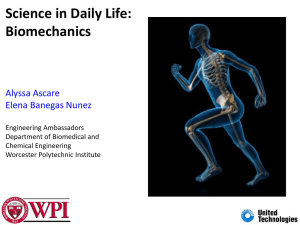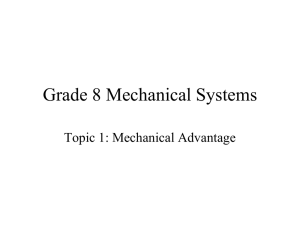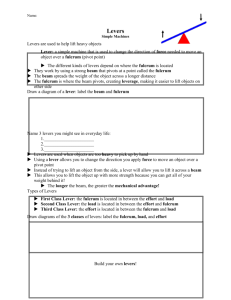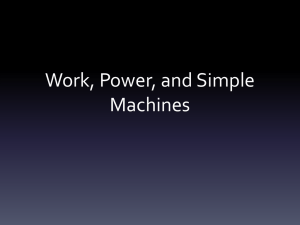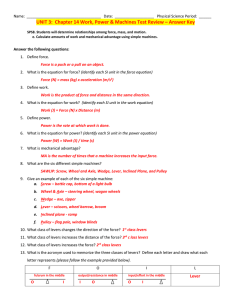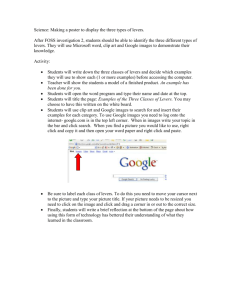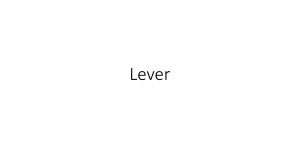Human Body as a Machine
advertisement
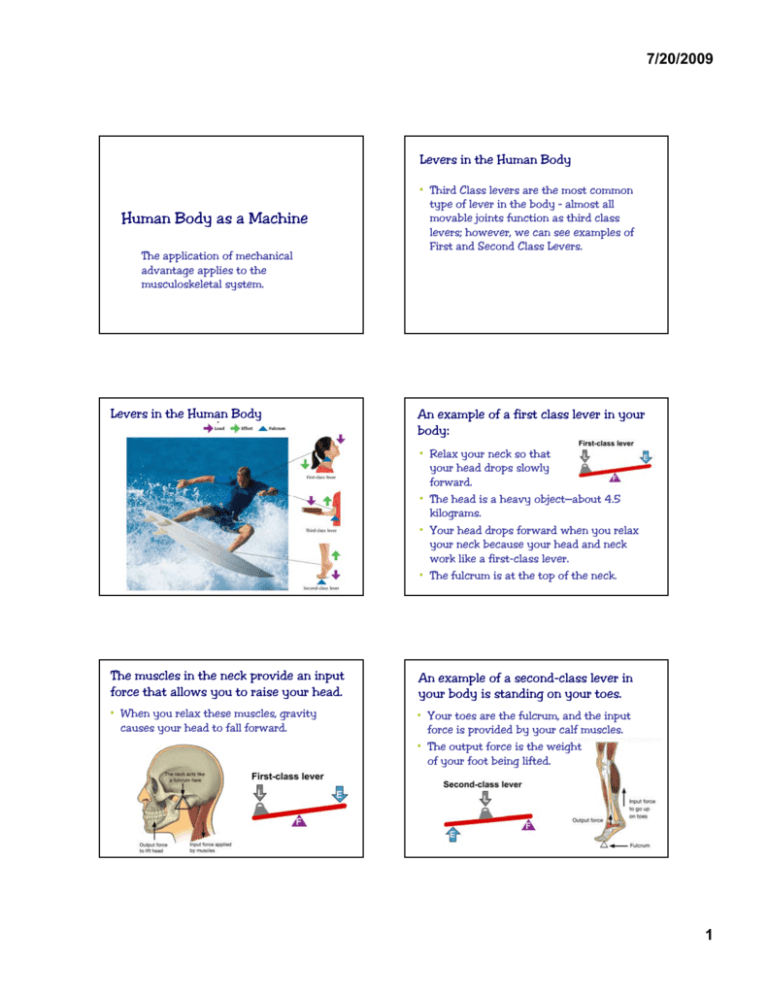
7/20/2009 Levers in the Human Body Human Body as a Machine The application of mechanical advantage applies to the musculoskeletal system. Levers in the Human Body • Third Class levers are the most common type of lever in the body – almost all movable joints function as third class levers; however, we can see examples of First and Second Class Levers. An example of a first class lever in your body: • Relax your neck so that your head drops slowly forward. • The Th head h d is i a heavy h object—about bj t b t 4 4.5 5 kilograms. • Your head drops forward when you relax your neck because your head and neck work like a first-class lever. • The fulcrum is at the top of the neck. The muscles in the neck provide an input force that allows you to raise your head. An example of a second-class lever in your body is standing on your toes. • When you relax these muscles, gravity causes your head to fall forward. • Your toes are the fulcrum, and the input force is provided by your calf muscles. • The output force is the weight off your ffoott b being i lifted. lift d 1 7/20/2009 When biting using your front teeth, your jaw works as a third-class lever. Your forearms work as third-class levers. • The input force (applied by your jaw muscles) occurs between the fulcrum (the joint where your jaw bone connects to your skull) and the output force which is applied to the apple. Third-class levers require more input force than output force. • However, the gain in third class levers is range of motion. • The range of motion of your arms is very important in that it makes it possible to reach, pick up objects, and lift them. Often, we are doing tasks that don’t require a lot of output force. • For example, when you turn a page of a book, you need range of motion to move the page, but you don’t need a lot of force! In the human body, all bones act as levers and each joint can serve as a fulcrum. fulcrum 2
